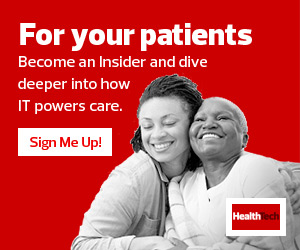Prioritize Safety and Speed in Healthcare Hiring
Safety is always a consideration when filling job openings in the healthcare sector, working with vulnerable populations. Making well-informed, safe hiring decisions is even more important. No organization wants a poor hiring decision to compromise employees and patients or lead to reputational damage.
However, safe doesn’t have to mean slow. Consider background screening technology.
READ MORE: Learn how technology can alleviate effects of the nursing shortage.
When selecting a background screening partner, it’s important to look for an organization that is committed to technological innovation that drives consistency in quality, speed of execution, flexibility and continuous progress on improving the status quo.
For example, about 85 percent of U.S. criminal searches can be completed without human intervention by accessing court systems electronically, normalizing the data with standardized naming conventions across jurisdictions, and then applying Fair Credit Reporting Act rules, healthcare regulatory requirements, funding source rules and client rules. This process increases both speed and quality by reducing human error.
Technology-Enabled Screening Services Can Help in Healthcare
Verifying candidates’ identities is another key component of the hiring workflow.
Identity verification isn’t just about the growing risk of a candidate applying for a job using stolen information. While data breaches and identity theft indeed have increased in recent years, identity verification also validates self-reported or manually entered data, providing additional reassurance that a simple typographical error or omission of a middle name won’t result in an incomplete background screening.
RELATED: Find out when staff augmentation is necessary in health IT.
Where else can automation fast-track the background screening process? Healthcare hiring entails specific checks to comply with regulations, and the regulatory landscape is constantly evolving.
Likewise, working with a background screening partner that offers industry-specific services simplifies managing healthcare hiring requirements. With a wide range of state-specific requirements such as drug and medical clearance; primary source verification of employment, education or credentials; state fingerprinting; state-specific searches against abuse registries; and Office of Inspector General searches, among many others, it’s important to process the screening accurately and expeditiously.
Healthcare Job Seekers Benefit from Streamlined Technology
With growing competition for candidates, introducing technology that streamlines the hiring process can also pay dividends by providing a better candidate experience. This is particularly important for engaging younger applicants who are digital natives and prefer the convenience and accessibility of smartphones.
A digital identity wallet, for example, empowers candidates to manage their own profiles. Similar to using a digital wallet on a mobile device, this technology makes proving identity and securely sharing verified work histories or credentials fast and easy, which boosts candidates’ career mobility.












